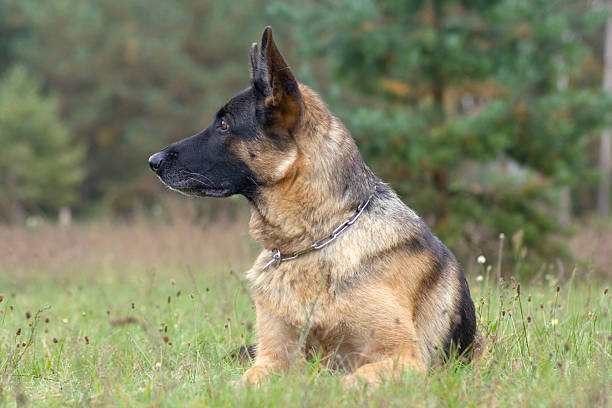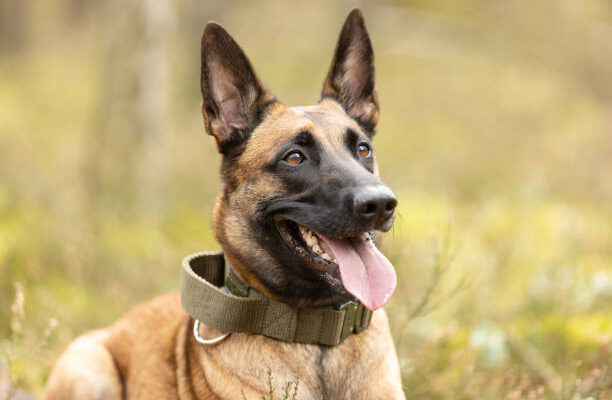Belgian Malinois remain distinguished because of their high intelligence alongside their absolute loyalty and remarkable work habits. People mistake the Malinois for a German Shepherd because its athleticism combines with exceptional working characteristics as well as its thinner shape and intensified motivation. The energetic breed which originated as Belgium’s sheep-herding dog has evolved into a preferred working police and military breed and protective companion that alsoression in active family environments.
A complete lifestyle guide covers all aspects about Belgian Malinois dogs which includes their historial background with their unique features and details training programs and trimming methods and their optimum housing requirements.
Table of Contents
- Introduction to Belgian Malinois
- History and Origin
- Physical Characteristics
- Personality and Temperament
- Training a Belgian Malinois
- Exercise and Activity Needs
- Nutritional Requirements and Diet
- Grooming and Hygiene
- Common Health Issues and Preventive Care
- Socialization and Behavior
- Living Conditions and Adaptability
- Fun Activities and Games
- Conclusion
Introduction to Belgian Malinois
The Belgian Malinois demonstrates superiority in agility together with intense focus because of its limitless energy source and focused work ethic. People seeking either an obedient companion or trusted working solutions will discover extraordinary traits from a Malinois. The intense breed forms strong emotional connections to its owners through which it provides equal portions of profound affection along with complete defense.
Due to its explosive energy level this dog requires experienced owners yet those qualified for it will discover its matchless friendship.
History and Origin
Herding Origins in Belgium
Belgian Malinois emerged in the late 1800s within the Belgian city of Malines when breeders created the dog alongside three other Belgian herding sheepdogs. Belgian dogs including Malinois and Tervuren and Laekenois and Groenendael originated from the same Belgian place of birth although each exhibits its own specific coat traits plus personality characteristics.
Rise to Fame as a Working Dog
The Malinois developed exceptional learning speed and physical strength which enabled its smooth transition from livestock herding to serve law enforcement operations in worldwide military sectors. Members of K9 units across the nation select this dog breed and Navy SEALs have it as part of their elite forces.
Fun Fact:
During the mission that captured Bin Laden the Navy SEALs selected their Belgian Malinois breed to serve as their companion.
Physical Characteristics

Size and Build
- Height: 22–26 inches at the shoulder
- Weight: 40–80 pounds
- Build: Athletic, lean, and muscular
Coat and Colors
The Malinois displays a tight-fitting weather-resistant coat which features straight short hair lying against its body.
Common Coat Colors:
- Fawn
- Mahogany
- Red
- With a black mask and ears
Distinctive Features
- Upright ears
- Almond-shaped dark eyes
- Proud, alert stance
Personality and Temperament
High Drive and Focus
Belgian Malinois demonstrate a remarkable focus point during tasks as well as other situations. Dog handlers who possess experience should choose Belgian Malinois due to their high energy output and strong loyalty characteristics.
Are Belgian Malinois Good Family Dogs?
Yes, but with a caveat. This dog breed flourishes best when house owners maintain structured daily activities and schedule plus provide daily mental stimulation as well as regular physical exercise. Young The warning goes to households with kids since Belgian Malinois may herd people unintentionally because of their natural instincts.
Are Belgian Malinois Good Guard Dogs?
Absolutely. The optimal home environment for Belgian Malinois comprises defined routines alongside regular brain exercises combined with physical workouts.. These dogs exhibit built-in defenses toward unfamiliar people while following instructions given by their masters.
Training a Belgian Malinois
Intelligence and Trainability
The Belgian Malinois takes the prestigious position of ranking as one of the smartest dog breeds while demonstrating exceptional skills in obedience training along with protection work. The proper training of Belgian Malinois demands consistent methods that are firm and produce positive outcomes.
Basic Training Tips:
Teach socialization together with obedience commands from an early age
Owners should reward dogs with positive feedback and food rewards as well as engaging play items.
Harsh punishment techniques should be avoided since they could harm the relationship of trust.
An owner of a Belgian Malinois should sign up for obedience training alongside working dog training classes.
Advanced Training Options:
- Schutzhund (Protection Sport)
- Agility Competitions
- Scent Detection and Tracking
- Service Dog Roles
Exercise and Activity Needs
Daily Exercise Requirements
Owner of a Belgian Malinois must provide their dog minimum daily exercises of 90 minutes which should include both physical and mental stimulation.
Ideal Activities:
- Long runs or hikes
- Fetch with high-intensity toys
- Agility training
- Bike runs
Mental Stimulation
To stop the development of boredom and destructive actions take these preventative measures:
- Interactive toys and feeders
- Obedience routines
- Hide-and-seek with objects
- Puzzle games and scent work
Nutritional Requirements and Diet
What to Feed Your Belgian Malinois
The high-protein and high-energy food needed by this breed supports its strong physical development along with its active energy demands.
Recommended Diet:
- Protein Sources: Chicken, beef, lamb, turkey, fish
- Fats: Omega-3 and Omega-6 fatty acids
- Carbs: Sweet potatoes, brown rice, quinoa, and vegetables
Feeding Schedule
- Puppies: 3–4 small meals daily
- Adults: 2 balanced meals per day
Always provide fresh water and avoid processed foods and fatty table scraps to prevent health issues.
Grooming and Hygiene
Grooming Needs
Regular attention to Belgian Malinois grooming needs is low because proper coat and skin health maintenance only requires periodic care.
Grooming Routine:
- Brushing: 2–3 times per week to remove loose hair
- Bathing: Once every 6–8 weeks or as needed
- Ear Cleaning: Weekly to prevent infections
- Nail Trimming: Every 3–4 weeks
- Teeth Brushing: At least twice a week
They shed seasonally—spring and fall—so increased brushing is needed during those times.
Common Health Issues and Preventive Care
Genetic and Common Health Concerns
The Malinois exhibits overall good health yet particular diseases might affect this breed.
- Hip and Elbow Dysplasia
- Progressive Retinal Atrophy (PRA)
- Epilepsy
- Allergies (skin and food)
- Anesthesia sensitivity
Preventive Care Checklist:
- Annual wellness exams
- Hip and joint supplements as recommended
- Balanced diet and weight control
- Routine blood work and eye checks
- Vaccination and flea/tick prevention
Socialization and Behavior
Importance of Early Socialization
Malinois develop stranger wariness along with territoriality whenever they lack proper socialization. Young Malinois should experience positive encounters with different people and sites during their early developmental period.
Socialization Tips:
- Puppy classes and group obedience training
- Frequent walks in new environments
- Meet-and-greets with other friendly dogs
- Exposure to car rides, loud noises, and crowds
Behavioral Traits:
Loyal: Strong attachment to their primary handler
The Belgian Malinois reacts immediately toward unfamiliar sounds.
Belgian Malinois naturally protect their residence and members of their family group.
A sensitive nature allows the dog to react gratefully to both verbal and physical praise.
Living Conditions and Adaptability
Best Living Conditions
Belgian Malinois dogs do well beyond the limits of resting on couches. Your Belgian Malinois requires room for active movement while a supportive household should fully grasp their working breed instincts.
Best Living Environments:
- Homes with large, secure yards
- Farms or open land
- Households with active adults
Climate Suitability
- Cold Weather: Tolerates well with some added protection
- Hot Weather: Needs shade, hydration, and rest periods
This breed does best as an indoor companion with access to a large outdoor space for play and training.
Fun Activities and Games
A Belgian Malinois requires mental engagement and physical exercise for maintaining their happiness.
Recommended Games:
- Tug-of-War: Great for bonding and burning energy
- Frisbee or Ball Retrieval: For agility and focus
- Agility Obstacles: Use tunnels, ramps, and weave poles
- Scent Work: Hide treats for them to find
Training as Play:
Learning becomes more enjoyable when owners teach their dogs tricks involving spin, crawl and play dead which both improve focus and create a stronger bond between pet and owner.
Conclusion
The Belgian Malinois stands apart from other dogs because it contains attributes of protection as well as companionship and difficulty within a single breed for those who seek this combination. Through a sufficient training environment coupled with dedicated dedication this focused dog breed will grant its owners extraordinary capabilities alongside deep loyalty.
Key Takeaways:
Belgian Malinois stands as one of the world’s most difficult and industrious breeds for training purposes.
The Belgian Malinois requires owners possessing active expertise about canine behavior to prosper.
A Belgian Malinois requires three elements for wellness: first socialization, second a protein-rich diet and finally intense exercise.
The extreme demands the Belgian Malinois requires are repaid with unbreakable loyalty and unwavering protection in addition to the friendship they provide.
A Belgian Malinois can become one of the most rewarding dog breeds for living and working when owners strike the correct balance between training and care as well as human-dog interaction.




